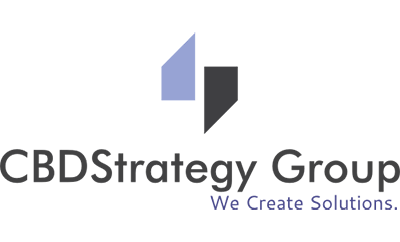

“Brands are more than logos,” Larry says. “People connect with the quality of people that you hire, the way … management is running a company, the way customer service responds, the way product availability occurs.”
Here, in the first installment of a three-part series, Larry offers tips on how to thrive inside the box of regulation to develop and maintain a brand aligned with your business objectives to ensure long-term success, domestically and abroad.
1. Learn to thrive.
Strict marketing and branding regulations may seem to put your cannabis business at a disadvantage, but your competition must adhere to the same regulations also. Instead of being angry with the law, Larry stresses to learn to thrive within it, as that’s where you will gain your competitive advantage.
“You only have a disadvantage if [your brand] misaligns with your business objective,” Larry says. “I think when the laws are stringent, it definitely does make it sometimes more difficult, but it requires more innovation, better outside-of-the-box thinking, and it requires a retooling of what a business can stand for instead of relying solely on advertising as a way to connect.”
In Canada, branding and marketing regulations are particularly stringent in the tobacco, alcohol and pharmaceutical markets, but the federal regulations that will govern legal cannabis when the market opens this summer allow each province to dictate rules on advertising, sales and pricing. In the U.S., however, there is still a lack of federal support and guidance. “You have states who are stepping up on multiple levels and demonstrating that they can create a healthy economy, but a lot of it’s functioning in the gray market,” Larry says.
The way Canadian cannabis companies navigate branding and marketing within regulations may bring a new perspective to businesses in the states, making operators think about the responsibility of branding and how their brands enter the market. Already, Canadian businesses face limited advertising, restrictions on packaging and other challenges.
For example, many of Canada’s licensed producers have a small web presence but are still able to maintain strong brands and reach patients in the medical market through recommendations from clinics, she says. The clinic will suggest which licensed producer a patient buys from based on the formulation of CBD and THC that has been recommended, and that may initiate the patient’s visit to a brand’s website as they look at which strains are available.
“If you go to their website, they have … basic information, but it’s not a website of storytelling and blogs and brands that we traditionally think about when brands go out and make these rich websites,” Larry says. “They’re utility-based.”
Traditional promotional advertising—such as radio, TV, and print ads; billboards; store signage; sponsoring sporting events or working with celebrity influencers—is illegal for Canadian cannabis brands, but Larry urges businesses to find compliant ways to connect with their audiences through public relations, hiring practices, research-based programs and customer service, while always complementing their business objectives.
“While I appreciate that it’s certainly very hard for many businesses to wrap their heads around how to achieve things, I think it’s an amazing opportunity for great thinkers and great designers to use design thinking to really put together brands that can be compliant but can still matter,” she says. “I think the players who will stay true to their brands while staying hyper-focused on what the law’s going to do, they will rise to the top, like they have in all other industries.”
For example, although celebrity influencers are off-limits, British Columbia’s Invictus recently added Gene Simmons to its board of directors as a “chief evangelist officer."
“While they could never use his likeness or celebrity to promote, they absolutely could put him on a board of directors or they could make him part of the C suite, and it is an interesting way to think about how you can still get news coverage while using celebrity, in brackets, but not using the traditional way of advertising or using the celebrity as an influencer,” Larry says.
2. Find your niche.
Brands need to find their niche in the market and then consistently stay true to that niche, Larry says. A brand can’t be successful unless it stands for something and knows what and who it is. By defining its values and staying true to them, a brand can identify and maintain its niche within the market. However, Larry adds that companies should not be afraid to conduct ongoing research and improve within their niche.
“I think in staying true to a brand’s integrity, brands that really know who they are, know what they stand for and really leverage strategy in their efforts to build brands always go the distance,” Larry says. “Strategy matters.”
Toms, the shoe company, is a good example of a brand that understands its place and how to differentiate itself, Larry says.
“They understood what they stood for, the materials they use, the way they develop products, the way they gave money back based on a purchase, helping consumers enforce responsibility,” she says.
Emerging socially and economically responsible cannabis companies that source products responsibly and add value are the ones that will succeed, Larry adds.
“Consistency in a message is not about marketing, consistency in a message is about practice,” she says.
3. Develop the brand beyond its visual identity.
While putting together your compliant and innovative brand, remember that while its visual identity is important, it should also demonstrate the company’s personality and objectives.
“Oftentimes, brand development is … how we’re going to market, what’s our brand going to look like and where are we going to play?” Larry says. “I think the opportunity brands should now be looking at is how can we better integrate all of our departments to drive a single conversation, a factual and compliant conversation, into the market that still motivates and creates enthusiasm in our company and in our clients? And that comes from a new way of working—taking down some of the silos and not necessarily thinking that a brand should be left only to a creative department.”
Larry urges clients to not only have a strong name and logo, but to also build out the nomenclature and essence of their brand.
“Language is everything,” she says, adding, “How a brand speaks, the language they use, the terminology they establish as a way for people to identify and believe in their conversation has to be different from brand to brand, otherwise we’re all telling the same story and having the same conversation.”
The brand must be larger than any individual in the organization, she adds. “If everybody in this room had to walk away from the brand, would the brand still be bigger than all of us and inspire the new employees who will come in how to jump on board and know what we stand for and therefore how to sell us into the market?”
4. Make sure the brand works for everyone.

“To build anything and stay on track requires a consistency and that should come out of the gate by getting everybody onboarded, so [that] as we’re building this brand, we’re building it for the best of the company, and not just for a single department’s individual needs,” she says.
In this industry, it may be hard to stop and take stock of the brand, she adds, but it is important to find time to come together to challenge and defend the core ideas to ensure it is well understood. That way, if the business expands or goes into hypergrowth, the brand remains solid.
“Even if you hired new people or you had a turn rate, you wouldn’t lose sight of where you are because the powers that be already came together and made the effort to ensure there was a single message and a single page that this brand grew from,” Larry says.
Last, it is important to involve everyone, she stresses, from the IT department to the customer service representatives to the sales staff. Each department must provide insight on sell-through, user experience and more to help create the whole brand story.
“It’s about people who are integral to the brand and understanding how the brand impacts the market from many different areas,” she says. “There is a global problem with a gap between sales and marketing, and mostly that’s because marketing teams often design the sales tools, and they haven’t asked the sales team what they really need to help close the deal.”
When more departments are involved in the development of brand building, products and communications, it ensures that the brand successfully moves to market, stays authentic and adds value, not just to the end-user, but also to the employees.
“Employees can succeed in their job, but beyond succeeding, they can thrive in what they do and feel that they don’t just have a job, but that they have a role because their voices are heard. Feeling like they are participating in the creation of the success of the company is what really makes the difference in the long tail of brand success,” Larry says.
Read Part 2 here and Part 3 here
Top Image: © Sergey Nivens | Adobe Stock
CBDStrategy Group logo and Jenn Larry headshot courtesy of Jenn Larry

























